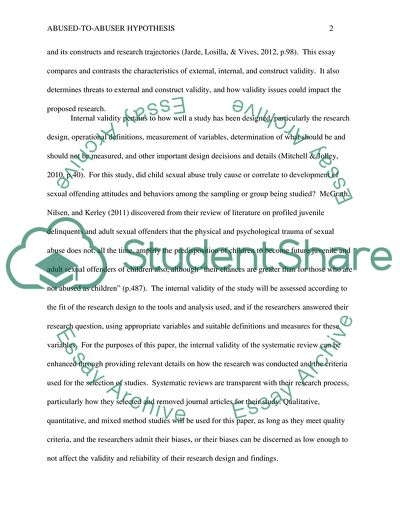Cite this document
(Abused-to-Abuser Hypothesis: Validity Issues Essay Example | Topics and Well Written Essays - 1750 words - 1, n.d.)
Abused-to-Abuser Hypothesis: Validity Issues Essay Example | Topics and Well Written Essays - 1750 words - 1. https://studentshare.org/sociology/1787113-paper-validity-external-internal-construct
Abused-to-Abuser Hypothesis: Validity Issues Essay Example | Topics and Well Written Essays - 1750 words - 1. https://studentshare.org/sociology/1787113-paper-validity-external-internal-construct
(Abused-to-Abuser Hypothesis: Validity Issues Essay Example | Topics and Well Written Essays - 1750 Words - 1)
Abused-to-Abuser Hypothesis: Validity Issues Essay Example | Topics and Well Written Essays - 1750 Words - 1. https://studentshare.org/sociology/1787113-paper-validity-external-internal-construct.
Abused-to-Abuser Hypothesis: Validity Issues Essay Example | Topics and Well Written Essays - 1750 Words - 1. https://studentshare.org/sociology/1787113-paper-validity-external-internal-construct.
“Abused-to-Abuser Hypothesis: Validity Issues Essay Example | Topics and Well Written Essays - 1750 Words - 1”. https://studentshare.org/sociology/1787113-paper-validity-external-internal-construct.


